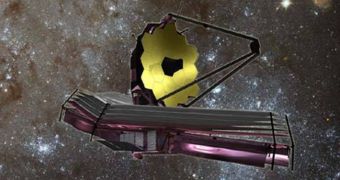Officials at the American space agency are hopeful that their next space observatory will be able to exceed all existing telescopes, and peer farther and deeper into the early days of the Universe.
The instrument could for example confirm the finding of the oldest galaxy yet, which astronomers operating the NASA Hubble Space Telescope announced on January 26.
That object is believed to lie an estimated 13.2 billion light-years away, which means that it developed to the state Hubble saw it in just some 500 million years after the Big Bang occurred.
Experts in charge of assembling the NASA James Webb Space Telescope, which is bound to be Hubble's successor, are hopeful that the new instrument will confirm the findings, and also that it will be able to see even deeper in the Cosmos.
This is very important because the Deep Field studies Hubble conducts need a much more sensitive instrument than the telescope itself to get confirmation. Doing so with existing observatories, either on the ground or in orbit, is very difficult at this point.
But the infrared JWST, which is currently scheduled to launch in the fall of 2005, will theoretically be able to see everything that Hubble does now, plays an extra something. Its detectors will be able to see deep into the sky, until a couple of hundred million years after the Big Bang.
“We're really pushing Hubble to its limits here. We're looking excitedly to the future, to using the James Webb Space Telescope to really unearth the earlier times that Hubble in fact won't be able to see,” said expert Garth Illingworth.
The University of California in Santa Cruz (UCSC) researcher, also the coauthor of the new study, made the announcement in front of reporters last week, at a conference announcing the discovery of the oldest and farthest known galaxy.
“It's not 100 percent. There's no way we can guarantee that. But we think it's very likely,” Illingworth said of the existence of the old galaxy, which has been dubbed UDFj-39546284.
The expert admitted that there is currently no hope of using ground-based telescopes to verify Hubble's findings. There is no way for these instruments to see such a faint object through Earth's atmosphere.
“Ultimately, to get the same level of confidence, we'll need the James Webb Space Telescope. This is incredibly faint. We can't do anything with our current ground-based telescopes on this,” he added.
Its spec sheet says that the instrument will be able to see as far back in time as 200 to 300 million years after the Big Bang exploded everything into being, Space reports. This is about the same time when the first stars developed, and when the Universe saw its first lights.

 14 DAY TRIAL //
14 DAY TRIAL //